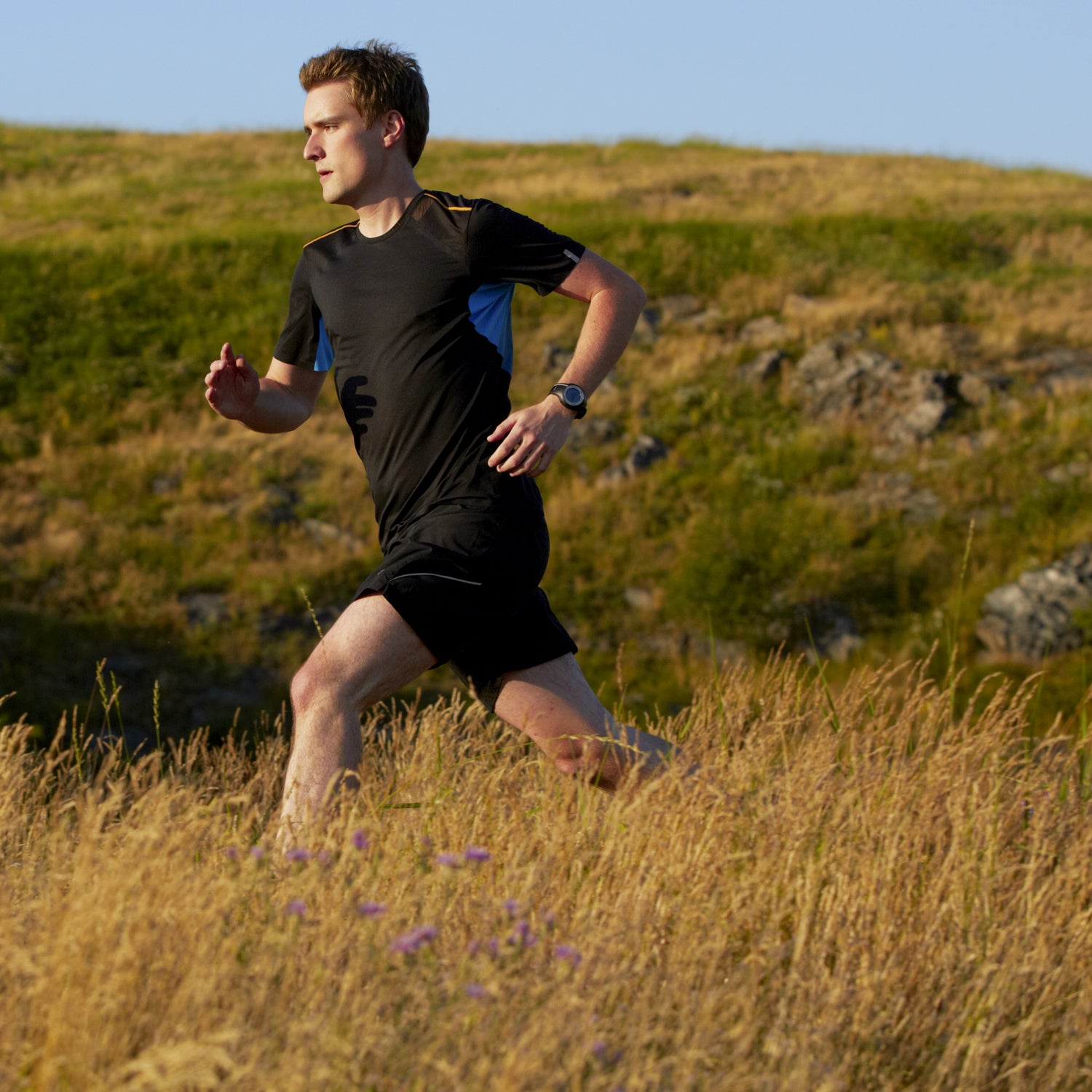Endurance athletes know the benefits of carbohydrates. We feast on them before long efforts and carefully plan mid-workout gels and sports-drink swigs. Extensive research over the last fifty years continues to endorse the practice of carbohydrate loading to maximize glycogen storage—and performance.
But there is another strategy that’s been gaining traction recently: going without carbohydrates during training.
Training with fewer carbohydrates teaches the body to be more efficient with its precious glycogen. “In training, part of what we’re doing is trying to get our body used to low fuel stores so they are more efficient when we actually have fuel,” , author of The Science of Running and University of Houston cross country coach, explains. “You are trying to embarrass the body so that it adapts.”
Embarrassing the body this way, called “,” can be done via two methods. The first is double workouts: a tough morning workout followed by a low-carbohydrate lunch, and then a second, easier workout a few hours later. The first workout empties the muscles of carbohydrates—which lunch doesn’t replenish—so the body must adapt to get through the second session. Another method is fasted workouts: long sessions performed with little to no carbohydrates consumed in the hours before, preventing easy access to fuel in the bloodstream.
Double workouts force the body to make more mitochondria, the cell’s energy powerhouses. More mitochondria means you’ll burn more fat—whose stores aren’t as limited as carbohydrates. Fasting increases the number of transporters that bring fuel (carbohydrate or fat) into the muscle. Either way, the end result is a system that is less dependent on carbohydrates, better able to use fat as fuel, and more efficient.
Two-a-days aren’t easy. The good news: You might already be doing fasted workouts on those mornings where you dash out the door without a snack. Because you haven’t eaten since the night before, exercising for longer than sixty to ninety minutes blows through your stored carbohydrates. The body experiences what the latter miles of a marathon feel like, and it learns a performance-enhancing lesson, says , an exercise physiologist and nutritionist at the Canadian Sport Institute. “We’re able to mimic the demands in the last twenty-five percent of the marathon…without having to run twenty-six miles.”
In fact, the main drawback is that these workouts are incredibly mentally and physically demanding. But that may be good practice, since the end of any marathon is tough and requires mental conditioning, Stellingwerff says. John Hawley, an exercise scientist at Australian Catholic University, agrees, “It’s good for the athlete to grovel… because that’s how they are going to feel at the end of the race.”
Note that this training strategy isn’t advocating an Aktins- or Paleo-diet approach; it does not involve eating low-carb constantly. The second part of the training-low strategy is competing high and fueled with carbs for optimal performance, so you still need to make sure your gut can process carbohydrates while racing. Magness recommends trying a fasted workout once every seven to ten days and a double workout once every two or three weeks. For other long efforts, eat your carbohydrates as usual. And avoid these strategies completely in the final weeks before the race. Doing them too often or too close to race day will leave you drained.
Stellingwerff uses the train low and race high methods with Canadian Olympians. In a case study following three elite marathoners, two set new personal bests, cutting almost six and three minutes off their times. (The third was new to the distance, but made a successful debut.)
These findings aren’t exactly new—and not everyone buys into them. Some studies agree with Stellingwerff’s results, documenting changes to mitochondria and fat usage that led to performance benefits. Other studies, however, detect physiological differences but not performance differences. The discrepancy might be a reflection of the lab setting, not the underlying physiology, says , an exercise scientist at Australian Catholic University.
“What athletes do out there when it’s a race situation versus sitting on the bike where we are trying to encourage them to go maximally, flat-out are two completely different things,” says Hawley. “At the moment there are no studies to show that performance is worse; there are some to show that it’s better.”
Stellingwerff warns that proper recovery afterwards—focusing on quality nutrition, hydration, and sleep—is crucial. Otherwise you risk overtraining, sickness, or injury.
Fortunately, there are some scientifically proven tips for enduring these workouts. Sipping and spitting out sports drinks tricks the brain into thinking fuel is coming, providing a low-carb boost. Coffee is another performance enhancer. But for tough, crucial workouts (race pace intervals, for example), carbo-load up. Stellingwerff believes these workouts are mostly “for the neck up” and it’s too hard to build confidence when your body is battling low carbohydrates.
The challenge might be just the push you need. “If you’ve hit a plateau,” says Magness, “then it’s a good strategy to take you to the next level.”


